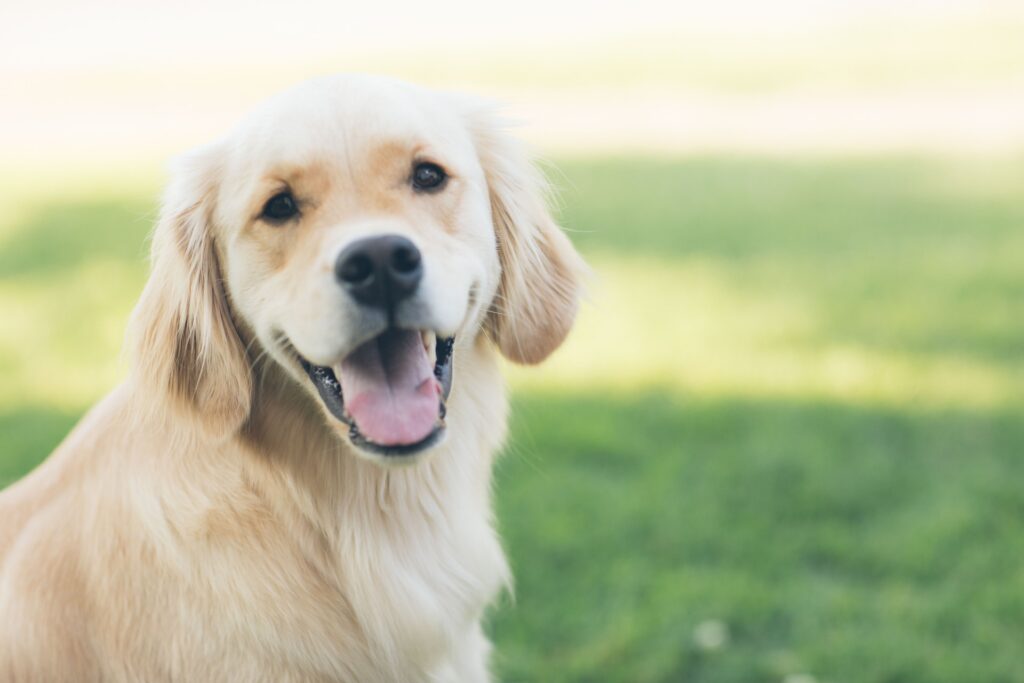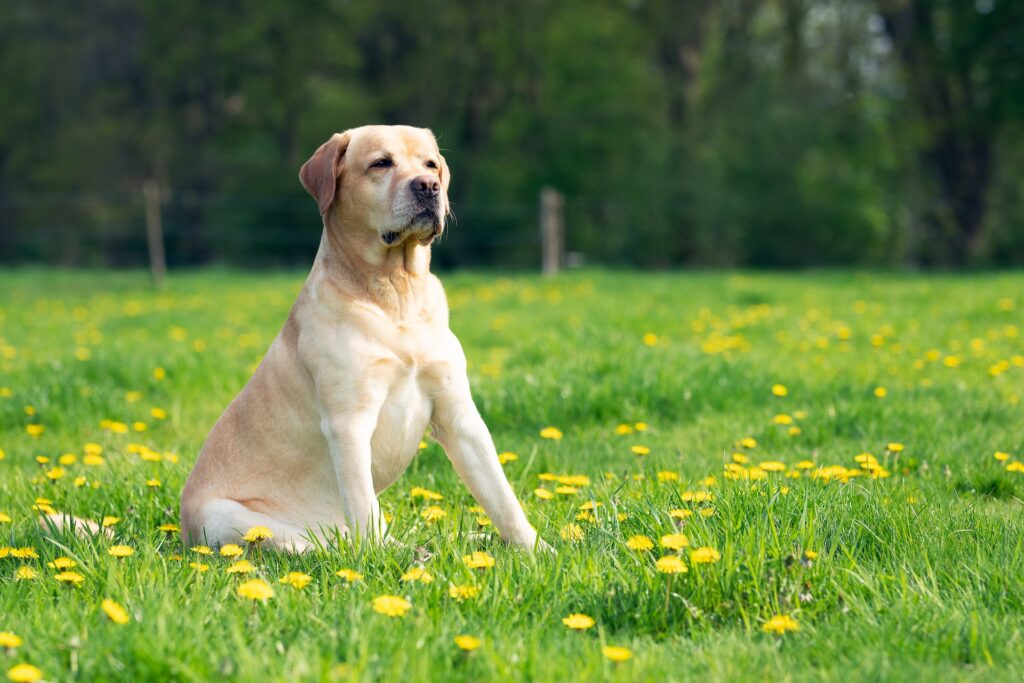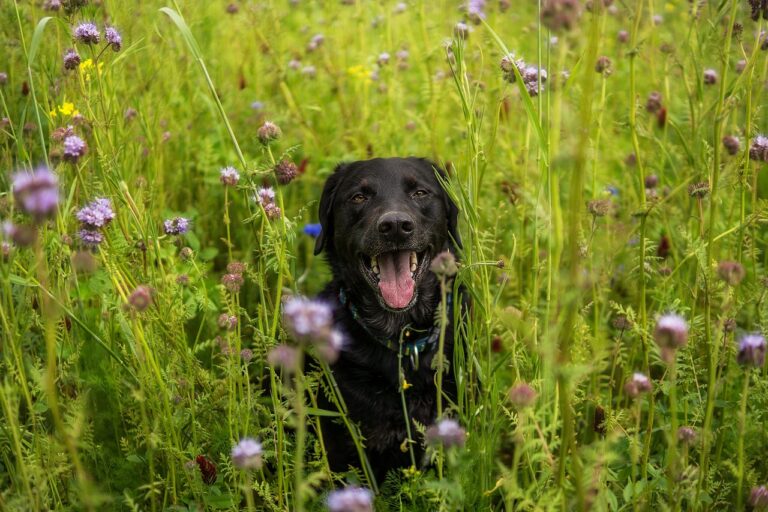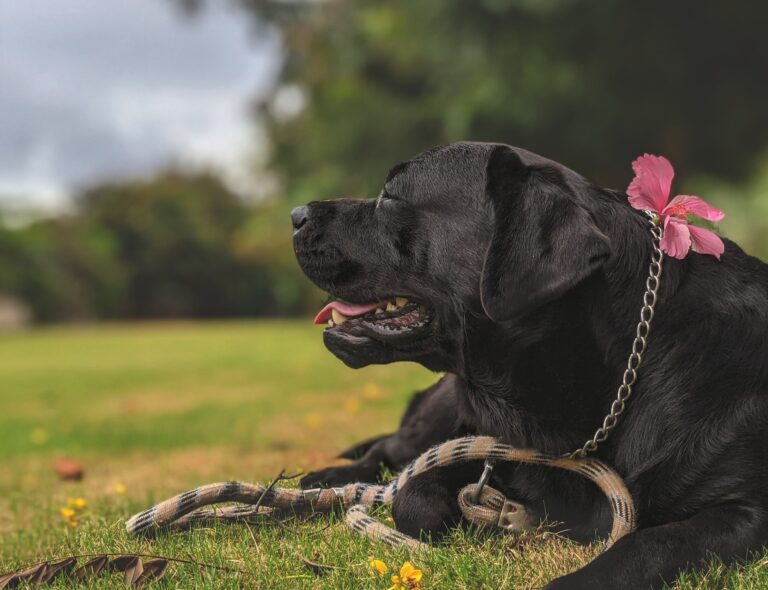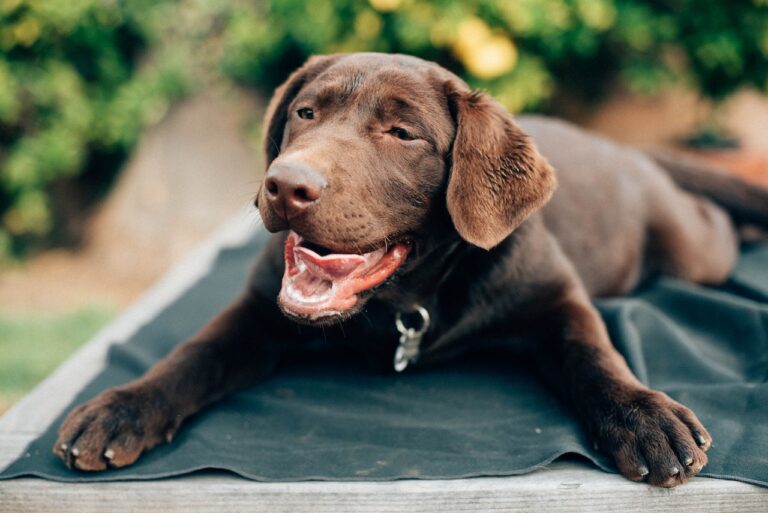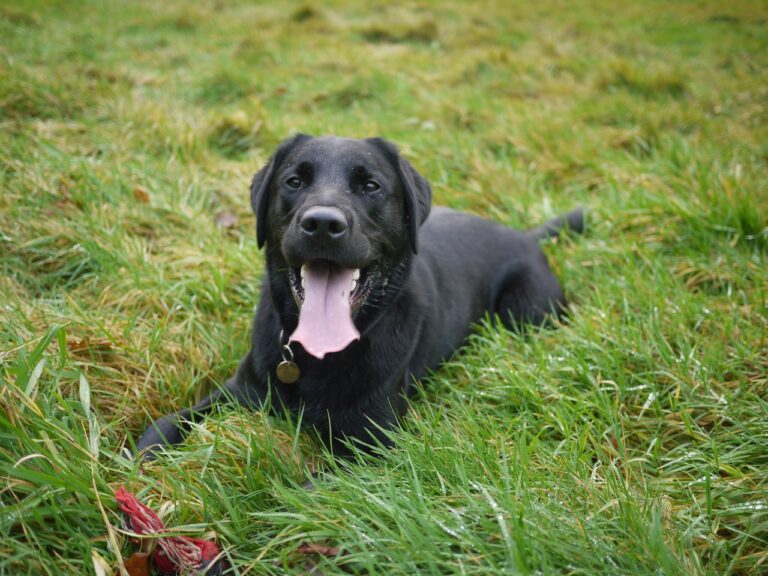Why Is My Labrador Losing Hair? Causes and Solutions
Is your furry pal shedding more than usual? Like its once luscious coat now thinning out and sporting a few bald patches? You’re not alone in thinking “Why is my Labrador losing hair?”. Hair loss in Labradors can be due to various factors or certain medical conditions. Diagnosing the root of the issue is essential to find an appropriate treatment plan and ensuring your Lab’s well-being.
So, let’s dive into why your Labrador may be losing hair and what you can do to help them maintain a healthy coat.
Understanding Coat Shedding in Labrador Retrievers
One of the many things that make the Labrador Retriever a popular breed is its lustrous coat. However, with great fluffiness comes great shedding. If you’re an owner of a Labrador Retriever or considering getting one, you may have questions about the potential shedding they exhibit.
In order to understand the shedding patterns of a Labrador Retriever, it’s important to understand their coat type. Labrador Retrievers have a double coat: a soft, dense undercoat that keeps them warm in cold conditions and a tougher topcoat that protects them from the environment. This dual coat system can also mean double the shedding. As Labrador Retrievers grow, their coats will continue to shed dead hair and fur to make room for new growth.
The Difference Between Normal and Excessive Hair Loss
While Labrador Retrievers aren’t considered high maintenance in grooming, they have a moderate shedding rate throughout the year. However, while they shed constantly, they also have a heavy shedding season in spring and fall, typically twice a year. During this season, you can expect a significant increase in the hair your dog sheds.
Normal shedding is easy to detect as most hair that falls out is long enough to be visible. You can tell by the hair length that it has been shed recently.
Recognizing Excessive Hair Loss in Labrador Retrievers
Excessive shedding, on the other hand, is more difficult to spot. It can often come in bald spots or patchy hair loss, which may indicate an underlying medical condition. While Labradors tend to shed more during seasonal changes, it’s best to take them to the vet for a diagnosis if you notice any unusual hair loss pattern.
Why Is My Labrador Losing Hair?
So if you notice your Labrador losing hair or excessive shedding, as mentioned above. It is essential to know what causes these issues. Common reasons for hair loss in Labradors can include:
1: Genetics
Genetics plays a crucial role in the hair growth of Labradors. Some are born with thin coats, while others have thick and fluffy coats. If your Labrador comes from a line of dogs with light or thin coats, your dog will likely have a thinner coat, which leads to hair loss.
2: Seasonal Shedding
Labradors shed throughout the year but tend to shed more when the weather changes. They shed their coats in the spring and fall to prepare their bodies for the changing temperature. You can expect to see large quantities of hair falling out during this time.
3: Lack of Nutrition
If your Labrador lacks enough nutrition, it may start to lose hair. Ensure you’re feeding your dog a balanced diet, giving them sufficient protein, fats, vitamins, and minerals. Consult your veterinarian to find out the best food for your Labrador.
4: Allergies
Labradors can develop allergies to certain foods or environmental factors such as pollen, dust, or chemicals. This can lead to excessive itching, scratching, and hair loss. If your dog is experiencing these symptoms, visit your veterinarian for a checkup.
5: Stress
Like humans, dogs can also experience stress, leading to hair loss. For instance, if you recently moved to a new home, introduced a new pet, or the dog’s owner is frequently absent, the stress experienced by the dog can manifest in hair loss.
6: Fleas and Ticks
Fleas and ticks can cause hair loss and skin irritation in Labradors. These tiny pests will often bite and feed on your dog’s blood. Your dog will experience itching and hair loss in the affected areas. Consult your veterinarian for the most suitable flea and tick-preventive product for your dog.
7: Hormonal Imbalances
Hormonal imbalances in dogs can lead to hair loss. For example, hypothyroidism, a condition where your dog’s thyroid gland doesn’t produce sufficient thyroid hormone, can lead to a thinning coat and hair loss. If you suspect your dog has hormonal imbalances, take them to the vet for a check-up.
8: Fungal and Bacterial Infections
Fungal and bacterial infections can affect a dog’s coat and lead to hair loss. Other symptoms, such as itching, redness, and flaky skin, typically accompany these infections. A veterinarian will be able to diagnose and treat the infection.
9: Skin Parasites
These pesky critters can wreak havoc on your pet’s skin and fur, leading to uncomfortable itching and hair loss. Other factors include allergies, hormonal imbalances, or even stress. If you’re concerned about your Labrador’s shedding, it’s best to consult a veterinarian who can help determine the root cause and provide treatment options.
10: Cancer
Cancer can cause dogs to lose hair. While it’s not the most common cause of hair loss, it’s essential not to overlook this possibility. Some forms of cancer impact the dog’s skin and coat, causing hair loss. If you notice sudden and unexplained hair loss, visiting your veterinarian for a checkup is important.
11: Sebaceous Adenitis
Sebaceous adenitis is a skin condition that affects some dog breeds, including Labradors. This condition causes the sebaceous glands to become inflamed, leading to hair loss and scaly skin. Symptoms typically begin in young adult dogs and progress over time. While it is not curable, treatment options like medicated baths, immunosuppressants, and dietary changes can help manage the condition.
12: Color Dilution Alopecia
Color dilution alopecia is a genetic disorder that affects dogs with dilute coat colors, such as blue or silver Labradors. This condition leads to hair loss, dry skin, and bacterial infections. While there is no known cure for color dilution alopecia, it is manageable through treatments like moisturizing shampoos and supplements like fish oil and avoiding harsh chemicals that can irritate the skin.
13: Seasonal Flank Alopecia
Seasonal flank alopecia is another skin condition that affects some Labradors. This condition is characterized by symmetrical hair loss on both sides of a dog’s flank during winter. While the exact cause of seasonal flank alopecia is unknown, it is believed to be related to a lack of sunlight exposure during the winter. Treatment options like supplements and phototherapy lamps can help mitigate the symptoms of this condition.
There are many possible causes of hair loss in Labradors. If your dog is experiencing excessive shedding or hair loss, it’s important to have them examined by a veterinarian who can provide an accurate diagnosis and treatment plan.
Treatment for Labrador Losing Hair
Treatment for hair loss in Labradors will depend on the underlying cause. Common treatments include:
👉Addressing Allergies
Allergies are a common cause of hair loss among Labradors. You can manage allergies by changing its diet or switching to mild shampoos. Treating fleas and ticks can prevent skin irritation that results in hair loss. If the hair loss is severe, you might require prescription medication from your veterinarian to manage allergies.
👉Managing Infections and Skin Problems
Fungal infections and bacterial infections can cause skin allergies and hair loss. Proper hygiene and grooming can help avoid these types of infections. In extreme situations, your vet might prescribe antibiotics or topical creams to manage fungal and bacterial infections.
👉Dealing with Hormonal Imbalance
Hormonal imbalances such as hypothyroidism can result in hair loss among Labradors. A vet can perform a blood test to determine if your furry friend is suffering from thyroid problems. If diagnosed early, vets can treat hormonal imbalances with hormone replacement therapy.
👉Changing Feeding Habits
Food allergens are a common cause of allergies in dogs. Changing your dog’s diet can help control their hair loss, especially if you find the cause of the allergy is food-based. You should switch to hypoallergenic dog food free from commonly effective allergens.
👉Phototherapy Lamps and Supplements
You can manage seasonal flank alopecia with phototherapy lamps and supplements such as fish oil or Vitamin E. Phototherapy lamps mimic natural sunlight, which helps to stimulate the production of hormones beneficial for hair regrowth. Supplements like fish oil and Vitamin E can help provide essential fatty acids in your dog’s diet, which can help to promote hair growth.
👉Immunosuppressants and Medicated Baths
Treatment for sebaceous adenitis often involves using immunosuppressants, which can help reduce inflammation and promote hair regrowth. Medicated baths with special shampoos can help soothe your dog’s skin and reduce itchiness.
👉Fish Oil Supplements and Moisturizing Shampoos
Color dilution alopecia can be managed by giving your dog fish oil supplements and using moisturizing shampoos. Fish oil helps to restore the fatty acids in your pup’s skin while moisturizing shampoos help keep their skin hydrated. Avoiding harsh chemicals that irritate the skin will also help reduce hair loss caused by color dilution alopecia.
These are just some treatments that can help manage hair loss in Labradors. Your vet can provide more information about other treatment options that might be available for your pet, depending on their specific condition.
How to Help Prevent Your Labrador from Losing Hair
Fortunately, there are several things that you can do to help prevent your Labrador from losing hair.
Balanced DietOne of the main causes of hair loss in Labradors is nutrition deficiency. Your dog’s hair needs vitamins and minerals to grow and remain healthy. Some essential nutrients that your pet needs include protein, carbohydrates, healthy fats, and vitamins A, C, E, and B-complex. Ensure you feed your dog a balanced diet containing all these essential nutrients. You can also consult your veterinarian on the best food choices for your Labrador.
✔️Regular Grooming
Another way to prevent hair loss in Labradors is by grooming your dog regularly. Regular grooming helps remove dead hair, debris, and dirt from your dog’s coat, preventing tangling and matting and reducing hair loss. You should also use the right grooming tools, such as a de-shedding brush, a slicker brush, and a comb, to keep your pet’s coat healthy and shiny.
✔️Avoid Over Bathing
Labradors do not require frequent baths, as they have natural oils that keep their coat clean and healthy. Overbathing can strip off these natural oils, leading to skin dryness and hair loss. To avoid over-bathing your pet, you should aim to bathe your Labrador once every three months or less frequently, depending on your dog’s activity levels and lifestyle.
✔️Prevent Parasites
Parasites such as fleas and ticks can cause hair loss in Labradors. Therefore, it is essential to keep your pet free from these pests. You can prevent these parasites by regularly applying tick and flea medication, ensuring that your dog’s living environment is clean, and keeping your pet away from high-risk areas such as tall grass and woodland.
✔️Regular Check-ups
Regular check-ups with your veterinarian can help prevent hair loss in Labradors. Your veterinarian can guide you on the best grooming practices, recommend the best tick and flea medication, and diagnose any underlying medical conditions causing your dog’s hair loss. Regular check-ups also help to catch any health problems early, allowing for early intervention and better treatment outcomes.
Following these steps can help keep your Labrador healthy and prevent hair loss.
Home Remedies for Labrador Hair Loss
Aside from medications and treatments, there are also several dog hair loss home remedies that you can use to help manage hair loss in your Labrador.
1: Humidifier
A humidifier will add moisture to the air, which is good for your dog’s coat and skin. Dry air can cause dry skin and increase hair loss. Running a humidifier around your dog’s environment will help retain moisture in its fur and promote healthy hair growth. Monitor humidity levels to avoid over-humidification, which can lead to mold growth.
2: Apple Cider Vinegar
Apple cider vinegar is an excellent remedy for hair loss in Labradors. It can be applied topically to your dog’s skin or added to its diet. The acidity of the vinegar helps restore the natural pH balance of the skin, which can reduce hair loss. To apply topically, mix one part apple cider vinegar with one part water and use a spray bottle to apply to your dog’s skin. Add one tablespoon of apple cider vinegar to your dog’s food daily for dietary purposes.
3: Lemon Juice
Lemon juice can work as a natural disinfectant and improve hair growth. Mix one part lemon juice with four parts water and use a spray bottle to apply the solution to your dog’s skin. Avoid sensitive areas and test a small skin patch before applying it to the entire body. It is essential to note that lemon juice can dry out your dog’s skin, so use this remedy sparingly.
4: Topical Olive Oil
Olive oil is an excellent moisturizer for dry and flaky skin. It is also good for reducing inflammation caused by allergies or skin irritations. Before applying:
- Warm the olive oil in the microwave for a few seconds, then apply it to your dog’s skin.
- Allow it to sit for 10 to 15 minutes, then rinse with warm water.
- Repeat this remedy once a week for maximum results.
So say goodbye to hair loss in your Labrador with these simple home remedies and follow the above tips.
Frequently Asked Questions
Why is my labrador getting bald spots?
Hair loss or balding in labradors can occur due to various reasons. One of the most common reasons is a skin infection caused by bacteria or fungus. In this case, you will notice red, itchy, and scaly patches on your dog’s skin, which can eventually lead to hair loss. Another reason could be hormonal imbalances such as hypothyroidism or Cushing’s disease.
These conditions affect the production of hormones that control hair growth in dogs, leading to hair loss. Other possibilities could be allergic reactions, genetic predisposition, or nutritional deficiencies.
What food causes hair loss in labradors?
The type of food you give your labrador can significantly affect hair growth and overall health. Feeding your dog low-quality or nutritionally deficient food can result in hair loss, dry skin, and other skin problems. In particular, some food ingredients such as grains, soy, and dairy products can trigger allergic reactions in some dogs, leading to hair loss. Choosing high-quality dog food appropriate for your dog’s age, breed, and health condition is crucial.
Can a Labrador recover from hair loss?
The good news is that, in most cases, labradors can recover from hair loss with proper care and treatment. Once you identify the underlying cause of your dog’s hair loss, your vet can prescribe the necessary treatment. Treatment options can vary depending on the cause, from topical creams and shampoos to oral medications and dietary changes.
Sometimes, your vet may also recommend omega-3 fatty acids or biotin supplements to promote hair growth. Your labrador’s coat can regrow and become healthy with proper treatment and care.
What food is best for a dog with allergies?
If your labrador has allergies, choosing a diet free from common allergens such as grains, soy, and dairy is essential. Instead, choose a diet rich in high-quality protein sources such as meat, fish, and eggs. You can also choose a hypoallergenic dog food brand specially formulated to be easily digestible and prevent allergic reactions.
Besides, you can supplement your dog’s diet with probiotics and prebiotics to support their gut health, which, in turn, can boost their immune system and reduce allergic reactions.
Final Words
There are several reasons why Labrador losing hair, which we have discussed above. So, if you see your little bud losing hair, it’s time to take a closer look and get them examined. Don’t neglect their furry coat, as it’s an indicator of their overall health. Now you know why your Labrador is losing hair. Be sure to maintain their health and happiness so that they can remain your best friend and companion.


